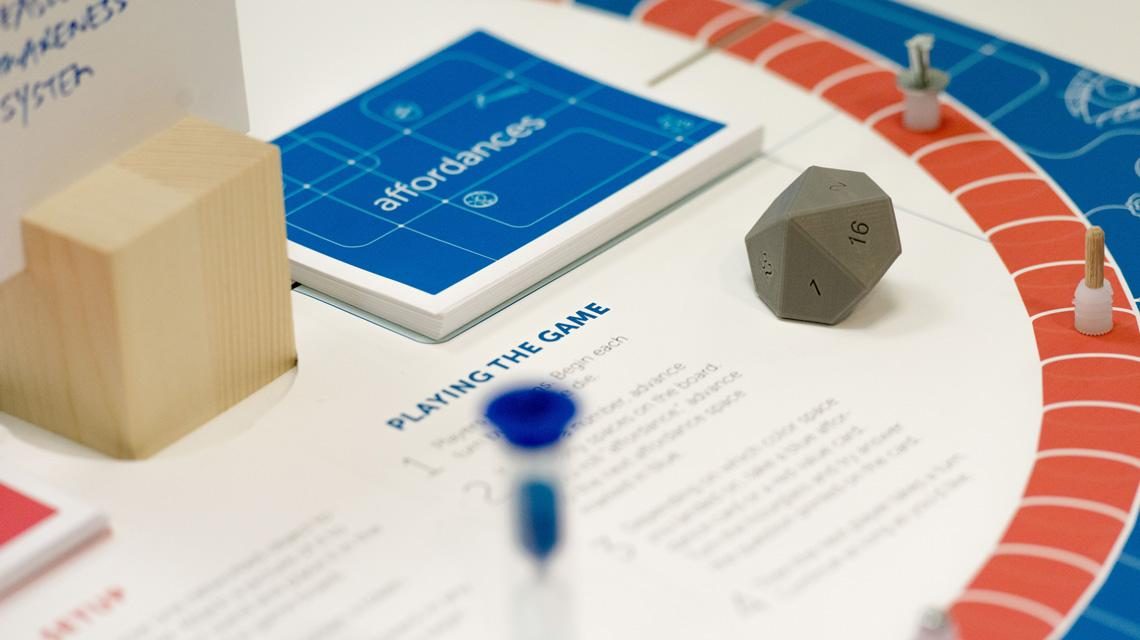
Assignment
Drawing on communication design practice, the class visualized and embodied key theoretical concepts into a physical toolkit that can be recalled and used during the prototyping process.
Synopsis
This workshop takes a critical perspective on emerging technology drawing on theories from science and technology studies. By reading key theories about the relationship between society and technology and the role of values in design, designers can engage more deeply and reflectively with their own responsibilities in enacting particular kinds of politics and shaping particular kinds of users, consumers and citizens through the creation of new products, platforms and services.
Problem
Designers rarely have time to consider their broader societal responsibilities with respect to the things that they bring into the world. Create an engagement tool that design and development teams can use during the early prototyping phase around new products, platforms and services as part of the Internet of Things so that they can meaningfully consider the role of values and ethics as well as their wider social responsibilities.
Proposed User Experience
Key design criteria for the tool were that it be digestible, actionable, and shareable.
- Digestible: make theoretical concepts accessible for the non-expert.
- Actionable: design the tool in such a way that gives the users (designers and developers) a way to apply their learnings to action.
- Shareable: make the tool open source and share it with design and development professionals as well as the public.
Prototype
In addition to various iterations of the game, the class held a work session with participants to test the prototype. This yielded valuable observations and insights, which were incorporated into the final design.
Final Results
Critical Loop, a multi-player board game, offers players an opportunity to discuss the socio-technical aspects of emerging technologies with respect to their relationship to human and non-human stakeholders. The game allows designers to think beyond technical specifications, functions and features in order to critically reflect upon the hidden politics, values and ethics within the products, platforms and services that they are developing. In playing the game, designers can choose to focus on an existing offering that a team is developing or a current (or future) technology that is selected from a range of examples that are included in the game.
Players roll the 3D printed ten-sided die and move their token around the game-board. They will land on either a ‘V’ or ‘A’ spot and draw a question card from the respective stack. The team will spend 5 minutes discussing the issues raised by the question.
The Values questions—in red—prompt designers to think about socio-technical, political, economic and environmental issues related to values, ethics and responsibility such as privacy and security, fairness, access and inclusion and aesthetics.
The Affordance questions—in blue—reference David Rose’s Enchanted Objects (Simon & Schuster, 2014). Rose lists seven abilities including a
Affordability, gesturability, glanceability, indestructability, loveability, usability and wearability.
The class decided to make all of the components of the game digitally available as open source material under a Creative Commons license so that designers can reproduce and use this game as a regular, integral part of their development process.
Instructors
Tomoko Ichikawa
Laura Forlano
Joanna Vodopivec
John Jung
Tiago Baccarelli Justino